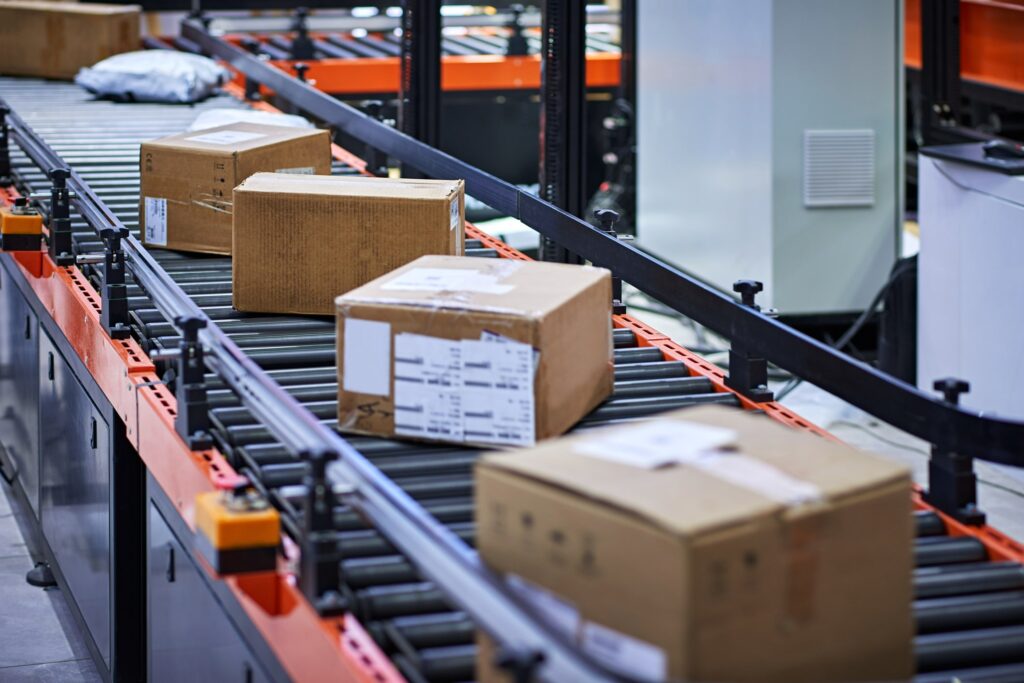Supply chain management experiences a wide range of issues in the intricate and quick-paced world of global commerce, from guaranteeing material delivery on schedule to preserving product integrity over vast distances. The emergence of the Internet of Things (IoT) has provided creative answers to these persistent issues, acting as a ray of hope. IoT technology promises to transform the tracking, management, and delivery of commodities by integrating smart devices, sensors, and improved networking across the supply chain.
This article explores the revolutionary potential of IoT and how it may improve inventory management, ensure efficient transportation, improve visibility, and address a host of other important supply chain challenges. IoT provides organisations with the means to make better decisions, cut expenses associated with operations, and ultimately meet the ever-growing demands of their customers by means of real-time data collecting and analysis.
How IoT Can Solve 5 Common Issues in Supply Chain Management
Below, you can see five of the most common problems faced by the supply chain and how IoT can help to either rectify or improve these situations.
Problem 1: Lack of Visibility

Without clear visibility, issues around supply shortages, delays, or quality may go unreported until they become more serious, which makes fixing them more expensive and complex. In addition to this, it restricts demand forecasting, as without visibility on sales trends, customer demand and inventory levels, it is very difficult to predict future needs accurately. Without the presence of real-time data, there are also increased transportation costs, inefficient inventory management and safety risks.
The Solution: Real-time Tracking and Monitoring
As commodities are transferred along the supply chain, IoT devices can track and monitor their location and condition in real-time. Companies can take prompt action by identifying any delays or problems as they arise, thanks to this visibility. This also enables better inventory management and more accurate forecasting.
Problem 2: Equipment Downtime
Equipment downtime can be highly detrimental, affecting various aspects of operations. It can increase operational costs, reduce productivity, disrupt the supply chain, lower customer experience and result in missed revenue opportunities. According to Forbes, unplanned downtime can cost industrial manufacturers up to $50 billion per year – so it’s obvious that it’s a part of manufacturing that business owners need to be proactive about.
The Solution: Predictive Maintenance
IoT sensors can monitor the condition of equipment used in the supply chain, such as vehicles and machinery, predicting when maintenance is needed. Predictive maintenance allows for repairs to be scheduled in advance, usually at off-peak times, minimising downtime. This can also significantly reduce the cost of any repairs, as issues are detected early on and are not only spotted when a major failure occurs. Predictive maintenance can eliminate major delays and increase the lifespan of equipment.
Problem 3: Quality Control
Quality control is a significant challenge for supply chains, especially over vast distances. There is a risk of variability in the quality of materials received from suppliers which can lead to product defects, production delays and increased inspection costs. For perishable goods like pharmaceuticals, electronics and food, it can be difficult to monitor environmental conditions which can cause spoilage and damage. A lack of visibility is also an issue here, as any quality control issues can’t be traced without real-time tracking. Have a look at this article to find out how you can enhance quality assurance in the food and beverage industry with AI.
The Solution: Environmental Conditions Monitoring
IoT sensors can continuously monitor environmental conditions, such as temperature, humidity, and shock, ensuring that products are stored and transported under optimal conditions. This mitigates the risks for perishable goods, because as soon as an issue is spotted, action can be taken which can potentially save a product from spoilage. These types of sensors can track the quality of materials and components at every step of the supply chain, ensuring quality and compliance, and allowing for any quality issue to be detected right down to the time and place.
Problem 4: Human Error
Human error can be a significant and costly issue in the supply chain. Below are some examples of the types of human errors which can impact optimal supply chain operation:
- Manual data entry mistakes – order processing, shipment information, and inventory tracking are just a few of the many supply chain tasks that rely on manual data input. Errors in this procedure may result in inaccurate orders, misdirected shipments, and disparities in inventory, hence generating extra expenses and delays.
- Miscommunication – supply chains often involve a complex network of suppliers, manufacturers, logistics providers, and customers. Miscommunication among these parties can result in incorrect specifications, missed deadlines, and unsatisfactory product quality.
- Inadequate training and oversight – employees who are not adequately trained or supervised may not follow procedures correctly, leading to mistakes in handling, packaging, or storing goods. This increases the risk of product damage, efficiency loss, and safety issues.
- Physical handling errors – physical handling mistakes, such as loading and unloading, can result in accidents, safety problems, and damaged items. These mistakes not only compromise the quality of the product but also carry a high risk of financial liability and injury.
The Solution: IoT Automation
IoT automation plays a crucial role in minimising human error in supply chains by enhancing accuracy, efficiency, and consistency across various processes. Automated data collection and entry reduces the need for manual data input, which is prone to error. Sensors and RFID (radio-frequency identification) tags can track inventory levels, shipment locations and environmental conditions in real-time, removing any need for humans and thus reducing the chance of mistakes.
IoT solutions offer a uniform platform for data exchange, which improves collaboration throughout the supply chain. This lowers the chance of miscommunication errors among everyone involved. Automated IoT systems provide accurate, real-time inventory data, reducing human errors associated with overstocking, stockouts, and misplacement of goods.
Problem 5: Security
Security in the supply chain is a critical matter as there are so many aspects to consider. From the protection of sensitive information and products to the infrastructure of safeguarding against theft and cyberattacks. Theft of goods can happen at various stages of the supply chain and can cause significant financial damage to a company. There is also the concern of tampering, which can be a huge issue for packages containing food and beverages or electronics because any interference with packaging can seriously compromise product quality and safety.
Supply chains are more vulnerable to hackers as they become more digitised. Hackers can exploit vulnerabilities to steal sensitive information, such as intellectual property, customer data, and business plans, or to disrupt operations through ransomware or other malicious software.
The Solution: Enhanced Security with IoT
There are multiple ways in which security can be enhanced by the adoption of IoT technologies. As mentioned earlier in the article, real-time tracking and monitoring with devices like GPS trackers and RFID tags allows companies to track products at every step of the supply chain. So if there are any issues, these are spotted and dealt with promptly. With environmental monitoring, the risk of spoiled products as a result of tampering is greatly reduced, too.
IoT enables a process called geofencing, where virtual boundaries are created around certain locations. As soon as any tracked assets fall outside of these zones, alerts are triggered, which indicates that there are potential security concerns including theft or diversion. IoT technology also generates a ‘digital chain of custody’, where every transaction and move of a product in the supply chain is recorded. This process limits the chance of fraud, counterfeiting and unauthorised selling.
Conclusion
The importance of IoT in supply chains cannot be overstated. It provides intricate networks that support international trade with unmatched visibility, efficiency, and security. Through real-time tracking and monitoring, predictive maintenance, and enhanced data analytics, IoT technologies enable businesses to anticipate disruptions, streamline operations, and make informed decisions. The precision and automation that IoT devices offer greatly minimise human error, which increases supply chains’ dependability and resilience. As supply chains continue to evolve in complexity and scope, the integration of IoT technologies becomes not just advantageous but essential. In addition to ensuring operational continuity, the ability to use IoT to prevent supply chain concerns fosters competitive advantage and promotes sustainable growth.











